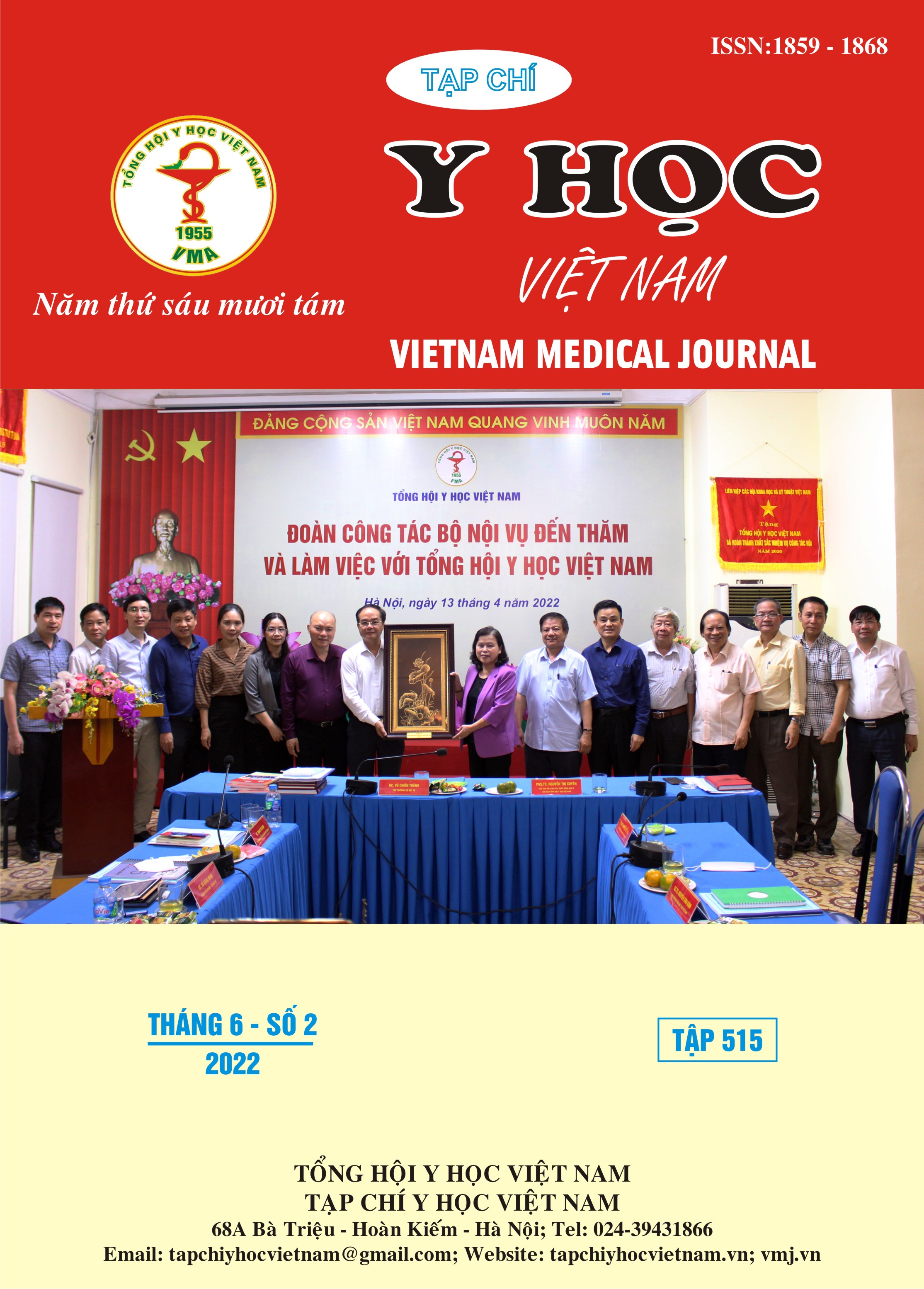COMMENTING THE EFFICIENCY EFFECTIVE OF OUTSIDE VENTRICULAR DRAINING TECHNIQUE IN PATIENTS WITH VENTRICULAR BLEEDING AT THE STROKE CENTER OF PHU THO PROVINCE GENERAL HOSPITAL
Main Article Content
Abstract
Background: Hemorrhagic stroke accounts for 10% to 15% of stroke cases representing approximately two million cases annually worldwide. The most common treatment of intraventricular bleeding with complications of acute ventricular dilatation is placing an external ventricular drain. Objectives: To evaluate the clinical, paraclinical, and technical efficiency of ventricular drainage out in patients with intraventricular bleeding at the Stroke Center of Phu Tho Provincial General Hospital. Methods: A case-descriptive study was performed on 19 patients with intraventricular hemorrhage with acute ventricular dilatation who were treated at the Stroke Center of Phu Tho Province General Hospital from June 2020 to September 2021. Results: At the time of admission, the mean Glasgow coma score (9.68[6-15]) was low. From day one, the average Glasgow coma score began to improve. At the time of admission, the mean Graeb score of the patients in the study (6.72[0-10]), improved rapidly and soon after day 1. Complications related to ventricular drainage to the outside were mainly purulent meningitis (15.8%) and recurrent bleeding (15.8%). The mortality rate of study patients at 1 month was 36.84%, the mortality rate of study patients at 3 months was 21.05%. The mortality rate from 0-3 months is 57.89%. Conclusion: The technique of external ventricular drainage in patients with intraventricular bleeding does not contribute to reducing the rate of sequelae and mortality of intraventricular bleeding.
Article Details
Keywords
Ventricular drainage technique, intraventricular bleeding, Phu Tho
References
2. FitzGerald M. J. T., Folan-Curran J. (2002). Clinical Neuroanatomy and Related Neuroscience, W. B. Saunders, Philadelphia, Pa. . Waxman S. G. (2000). Ventricles and coverings of the brain. Correlative Neuroanatomy, Lange Medical Books/McGraw-Hill, New York, NY, 153-168.
3. Gaberel T., Magheru C., Parienti J. J. et al. (2011). Intraventricular fibrinolysis versus external ventricular drainage alone in intraventricular hemorrhage: a meta-analysis. Stroke, 42 (10), 2776-2781.
4. Lê Văn Thính, Trần Viết Lực, Nguyễn Thị Xuyên và cs. (2011). Tình hình và thực trạng chăm sóc tai biến mạch máu não trong các bệnh viện đa khoa từ tuyến tỉnh trở lên ở Việt Nam: số chuyên đề hội nghị khoa học bệnh viện Bạch Mai lần thứ 28. Y học Lâm sàng Bệnh viện Bạch Mai, 1, 248-252.
5. Lương Quốc Chính, Mai Duy Tôn, Nguyễn Đạt Anh và cs. (2015). Hiệu quả dẫn lưu não thất ra ngoài trong vòng 12 giờ sau triệu chứng khởi phát trong chảy máu não thất có giãn não thất cấp. Tạp chí Nghiên cứu Y học, 93 (1), 31-38.
6. Naff N. J., Carhuapoma J. R., Williams M. A. et al. (2000). Treatment of intraventricular hemorrhage with urokinase : effects on 30-Day survival. Stroke, 31 (4), 841-847.
7. Nguyễn Anh Tuấn, Nguyễn Đạt Anh. (2010). Nghiên cứu kết quả theo dõi áp lực nội sọ ở các bệnh nhân được dẫn lưu não thất ra ngoài tại Khoa Cấp cứu, Bệnh viện Bạch Mai. Tạp chí Y học Việt Nam, 373 (1), 19-23.
8. Staykov D., Volbers B., Wagner I. et al. (2011). Prognostic significance of third ventricle blood volume in intracerebral haemorrhage with severe ventricular involvement. J Neurol Neurosurg Psychiatry, 82 (11), 1260-1263.
9. Sterne J. A., Egger M., Smith G. D. (2001). Systematic reviews in health care: Investigating and dealing with publication and other biases in meta-analysis. BMJ, 323 (7304), 101-105.


